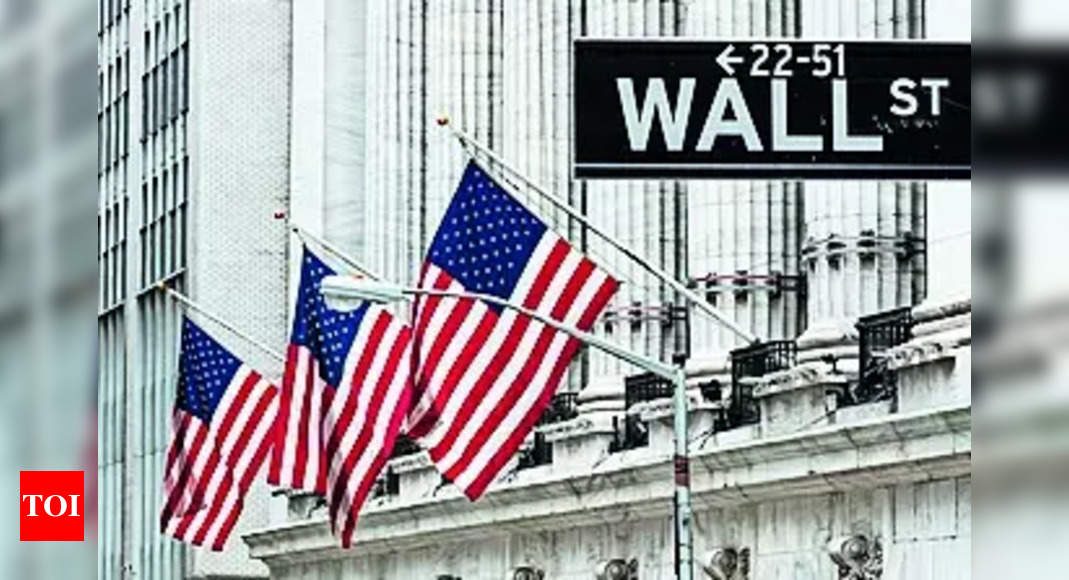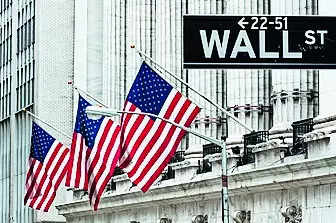[ad_1]
Wall Street experienced a significant downturn on Wednesday, driven by mounting concerns that the recent inflationary pressures are not merely temporary disturbances but a persistent trend. The S&P 500 saw a decline of 0.9%, with a vast majority of stocks within the index following suit. The Dow Jones Industrial Average dropped by 422 points, or 1.1%, and the Nasdaq composite decreased by 0.8%.
This downward movement was triggered by a report indicating that inflation in the last month was higher than what economists had anticipated, marking it as the third consecutive report suggesting that the progress in reducing high inflation might be losing momentum. Such developments cast doubt on the optimism that the disappointing inflation data for January and February could be overlooked due to technical reasons.
Joe Davis, Vanguard’s chief global economist, highlighted, “There are still embers of inflation here and there in the economy.” This scenario presents a challenging outlook for consumers, potentially leading to even higher prices, and incites fear on Wall Street that the Federal Reserve may delay the anticipated cuts to interest rates.
The expectations of rate cuts had fueled a more than 20% surge in the S&P 500 since Halloween, predicated on the hope that the Federal Reserve would reduce its main interest rate, currently at a two-decade high. However, the Fed has been cautious, seeking more concrete evidence of a sustainable decrease in inflation towards its 2% target.
Brian Jacobsen, chief economist at Annex Wealth Management, noted, “Two data points don’t make a trend, but maybe three do.” The market is now bracing for the possibility of the Fed shifting its stance from contemplating rate cuts to considering rate hikes, especially if future data follows the current trend.
The report had immediate repercussions in the bond market as well, with the yield on the 10-year Treasury jumping to 4.54% from 4.36%. Consequently, traders significantly reduced their bets on a June rate cut, with the perceived likelihood plummeting from nearly 74% a month ago to just 17%.
Wednesday’s biggest losers included sectors most susceptible to high interest rates, such as real estate investment trusts and utilities, with real-estate stocks in the S&P 500 falling by 4.1%. The day ended with the S&P 500 down 49.27 points, the Dow dropping 422.16 points, and the Nasdaq composite falling 136.28 points.
The inflation data not only dampened hopes for rate cuts but also put a spotlight on the pricing of US stocks, which critics argue appeared overly expensive. With the next earnings season underway, led by Delta Air Lines’ better-than-expected results, all eyes are on how corporate profits will fare amidst these economic challenges.
Globally, the inflation report had a mixed impact, with stocks rising in Hong Kong but falling in Shanghai after a downgrade in China’s financial outlook by Fitch Ratings. Additionally, the report led to a stronger dollar, notably pushing the yen to a 33-year low against it.
As Wall Street grapples with these inflation concerns, the global financial community remains on edge, closely monitoring the Federal Reserve’s next moves and their potential impact on the global economy.
(With inputs from agencies)
This downward movement was triggered by a report indicating that inflation in the last month was higher than what economists had anticipated, marking it as the third consecutive report suggesting that the progress in reducing high inflation might be losing momentum. Such developments cast doubt on the optimism that the disappointing inflation data for January and February could be overlooked due to technical reasons.
Joe Davis, Vanguard’s chief global economist, highlighted, “There are still embers of inflation here and there in the economy.” This scenario presents a challenging outlook for consumers, potentially leading to even higher prices, and incites fear on Wall Street that the Federal Reserve may delay the anticipated cuts to interest rates.
The expectations of rate cuts had fueled a more than 20% surge in the S&P 500 since Halloween, predicated on the hope that the Federal Reserve would reduce its main interest rate, currently at a two-decade high. However, the Fed has been cautious, seeking more concrete evidence of a sustainable decrease in inflation towards its 2% target.
Brian Jacobsen, chief economist at Annex Wealth Management, noted, “Two data points don’t make a trend, but maybe three do.” The market is now bracing for the possibility of the Fed shifting its stance from contemplating rate cuts to considering rate hikes, especially if future data follows the current trend.
The report had immediate repercussions in the bond market as well, with the yield on the 10-year Treasury jumping to 4.54% from 4.36%. Consequently, traders significantly reduced their bets on a June rate cut, with the perceived likelihood plummeting from nearly 74% a month ago to just 17%.
Wednesday’s biggest losers included sectors most susceptible to high interest rates, such as real estate investment trusts and utilities, with real-estate stocks in the S&P 500 falling by 4.1%. The day ended with the S&P 500 down 49.27 points, the Dow dropping 422.16 points, and the Nasdaq composite falling 136.28 points.
The inflation data not only dampened hopes for rate cuts but also put a spotlight on the pricing of US stocks, which critics argue appeared overly expensive. With the next earnings season underway, led by Delta Air Lines’ better-than-expected results, all eyes are on how corporate profits will fare amidst these economic challenges.
Globally, the inflation report had a mixed impact, with stocks rising in Hong Kong but falling in Shanghai after a downgrade in China’s financial outlook by Fitch Ratings. Additionally, the report led to a stronger dollar, notably pushing the yen to a 33-year low against it.
As Wall Street grapples with these inflation concerns, the global financial community remains on edge, closely monitoring the Federal Reserve’s next moves and their potential impact on the global economy.
(With inputs from agencies)
[ad_2]

